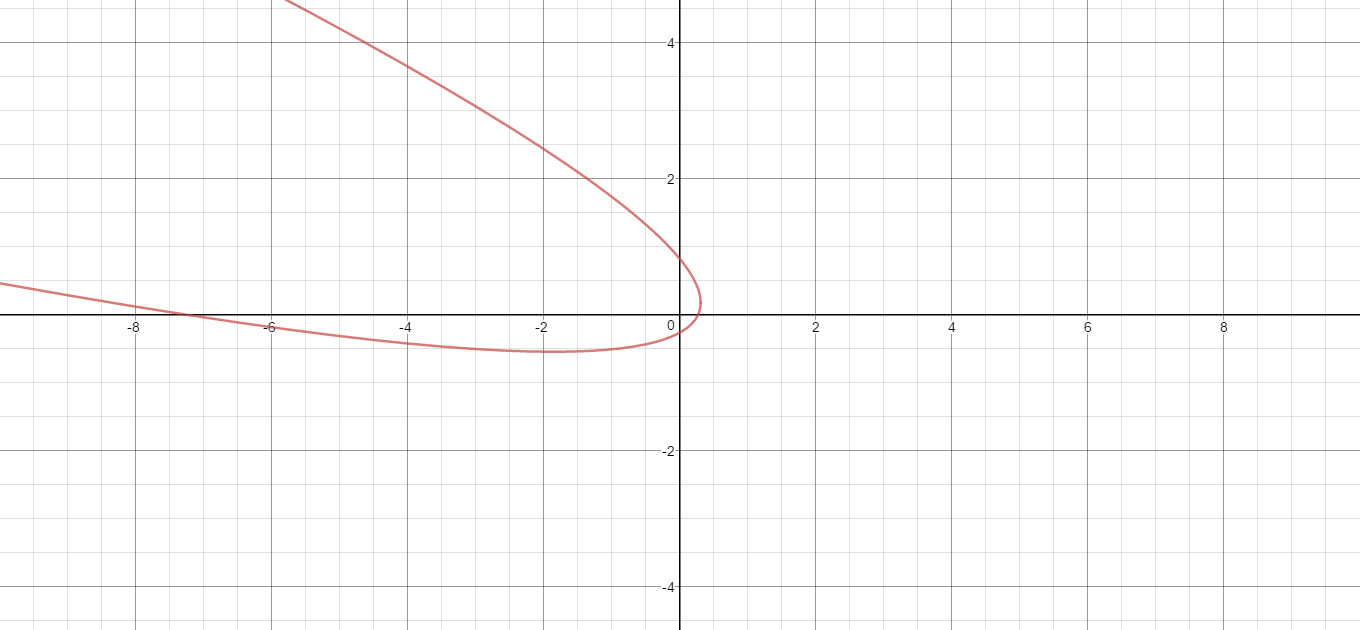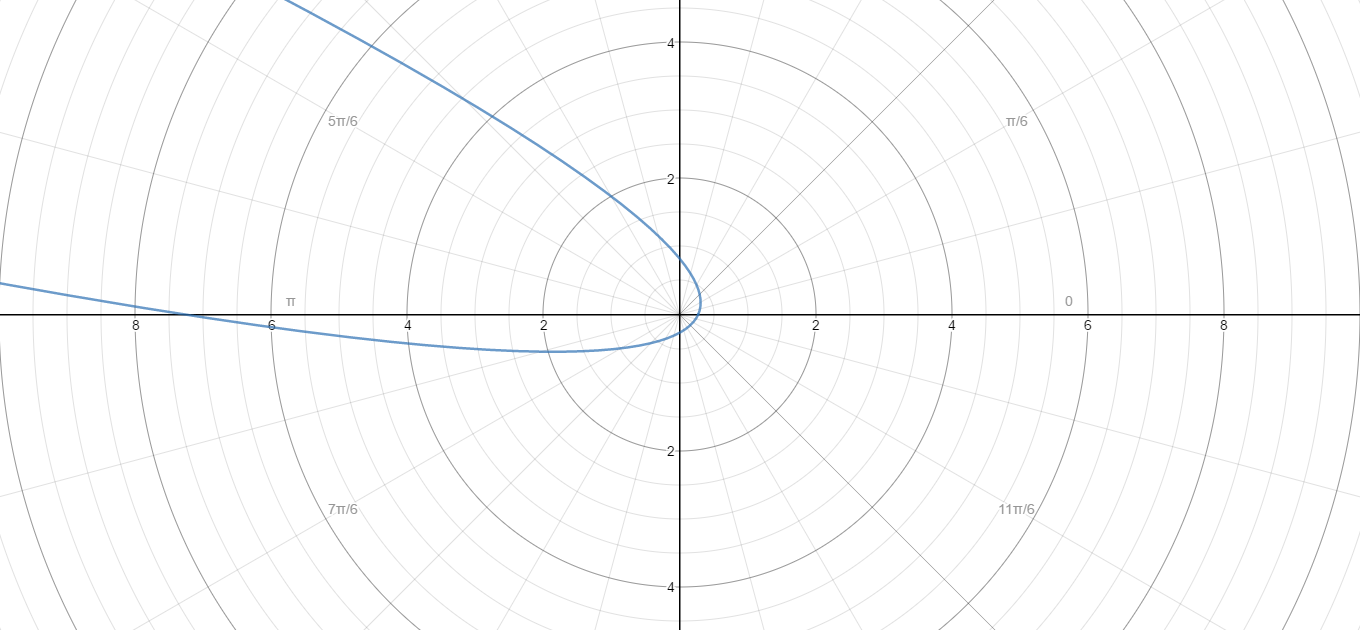Given: #2=(-x-3y)^2-5y+7x#
Here is the graph of the Cartesian equation.
 )
)
Substitute #rcos(theta)# for x and #rsin(theta)# for y:
#2=(-rcos(theta)-3rsin(theta))^2-5rsin(theta)+7rcos(theta)#
Simplify:
#2=((-1)(r)(cos(theta)+3sin(theta)))^2+7rcos(theta)-5rsin(theta)#
#2=(-1)^2(r)^2(cos(theta)+3sin(theta))^2+(7cos(theta)-5sin(theta))r#
#0=(cos(theta)+3sin(theta))^2(r)^2+(7cos(theta)-5sin(theta))r -2#
#0=(cos(theta)+3sin(theta))^2r^2+ (7cos(theta)-5sin(theta))r - 2#
The above is a quadratic where #a = (cos(theta)+3sin(theta))^2, b = 7cos(theta)-5sin(theta) and c = -2#
Using the positive root of the quadratic formula:
#r = (5sin(theta)-7cos(theta) + sqrt((7cos(theta)-5sin(theta))^2+8(cos(theta)+3sin(theta))^2))/(2(cos(theta)+3sin(theta))^2)#
This is the polar equation.
Here is the graph of the polar equation
 )
)
This proves that the conversion is correct.
 )
)  )
) 